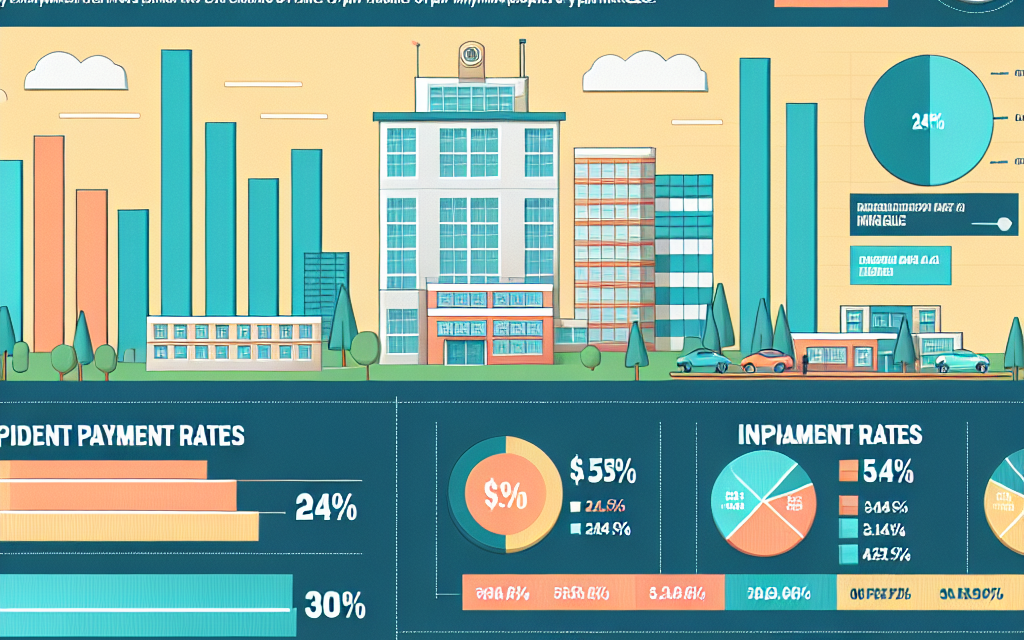Medicare Plans: 2.4% Pay Increase for Inpatient Hospitals in the Coming Year
The Medicare program, a cornerstone of the American healthcare system, provides essential health coverage for millions of seniors and individuals with disabilities. Each year, adjustments to Medicare reimbursement rates can significantly impact the financial health of hospitals and the quality of care provided to patients. In the coming year, a 2.4% pay increase for inpatient hospitals has been announced, which is expected to have far-reaching implications. This article delves into the details of this pay increase, its implications for hospitals, patients, and the broader healthcare landscape.
Understanding the Medicare Payment System
The Medicare payment system is complex, designed to ensure that healthcare providers are compensated fairly for the services they deliver. The Centers for Medicare & Medicaid Services (CMS) oversees this system, which includes various payment models for different types of care, including inpatient hospital services.
Inpatient hospitals are reimbursed under the Inpatient Prospective Payment System (IPPS), which pays hospitals a predetermined amount based on the diagnosis-related group (DRG) associated with a patient’s condition. This system incentivizes hospitals to provide efficient care while maintaining quality standards. The annual updates to payment rates are influenced by various factors, including inflation, changes in healthcare costs, and policy adjustments aimed at improving care delivery.
The 2.4% Pay Increase Explained
The 2.4% pay increase for inpatient hospitals is part of the annual update to the IPPS. This increase is designed to account for inflation and rising operational costs faced by hospitals. The increase is based on the hospital market basket index, which measures the cost of goods and services that hospitals purchase.
For the upcoming year, the 2.4% increase is particularly significant as it comes at a time when many hospitals are grappling with financial challenges exacerbated by the COVID-19 pandemic. The pandemic has led to increased operational costs, staffing shortages, and a surge in demand for healthcare services, all of which have strained hospital budgets.
Impact on Hospital Operations
The 2.4% pay increase is expected to have several implications for hospital operations:
- Financial Stability: The increase will provide much-needed financial relief to hospitals, allowing them to stabilize their budgets and invest in necessary resources.
- Staffing and Recruitment: With additional funds, hospitals may be better positioned to attract and retain staff, addressing the ongoing workforce shortages in the healthcare sector.
- Quality of Care: Increased funding can lead to improvements in patient care, as hospitals can invest in new technologies, training, and facilities.
- Community Health Initiatives: Hospitals may allocate funds towards community health programs, addressing social determinants of health and improving overall population health.
However, the increase is not without its challenges. Hospitals must navigate the complexities of reimbursement and ensure that they are meeting quality metrics to receive the full benefit of the pay increase. Additionally, the increase may not fully offset the financial pressures many hospitals face, particularly those in rural or underserved areas.
Challenges Facing Inpatient Hospitals
Despite the positive aspects of the 2.4% pay increase, inpatient hospitals continue to face numerous challenges that can impact their financial viability and ability to provide quality care.
Financial Pressures
Many hospitals operate on thin margins, and the financial pressures they face are multifaceted:
- Rising Operational Costs: Hospitals are experiencing increased costs for supplies, labor, and technology. The pandemic has exacerbated these issues, leading to higher prices for personal protective equipment (PPE) and other essential items.
- Uncompensated Care: Many hospitals provide care to uninsured or underinsured patients, leading to significant financial losses. The pay increase may not fully compensate for these losses.
- Regulatory Compliance: Hospitals must comply with numerous regulations, which can be costly and time-consuming. Failure to meet these requirements can result in penalties and reduced reimbursement rates.
These financial pressures can lead to difficult decisions for hospital administrators, including potential service reductions or layoffs, which can ultimately affect patient care.
Workforce Shortages
The healthcare workforce is facing significant shortages, particularly in nursing and specialized medical fields. The pandemic has intensified these challenges, leading to burnout and early retirements among healthcare professionals. The 2.4% pay increase may help hospitals attract new talent, but it is not a panacea for the systemic issues contributing to workforce shortages.
To address these shortages, hospitals may need to implement innovative recruitment strategies, such as:
- Increased Compensation: Offering competitive salaries and benefits to attract new staff.
- Flexible Work Arrangements: Providing options for remote work or flexible scheduling to improve work-life balance.
- Training and Development: Investing in ongoing education and training programs to enhance staff skills and job satisfaction.
Ultimately, addressing workforce shortages will require a multifaceted approach that goes beyond financial incentives.
Implications for Patient Care
The 2.4% pay increase for inpatient hospitals has significant implications for patient care. As hospitals receive additional funding, they can enhance the quality of care provided to patients in several ways.
Improved Access to Services
With increased funding, hospitals may be able to expand their services and improve access to care for patients. This could include:
- Extended Hours: Offering extended hours for outpatient services to accommodate patients’ schedules.
- New Programs: Developing new programs to address specific health needs in the community, such as mental health services or chronic disease management.
- Telehealth Services: Expanding telehealth offerings to reach patients who may have difficulty accessing in-person care.
Improved access to services can lead to better health outcomes, as patients are more likely to seek care when it is convenient and available.
Enhanced Quality of Care
The additional funding can also lead to improvements in the quality of care provided to patients. Hospitals may invest in:
- Technology Upgrades: Implementing new technologies, such as electronic health records (EHR) systems or advanced diagnostic tools, to improve patient care.
- Staff Training: Providing ongoing training for staff to ensure they are up-to-date on best practices and new treatment protocols.
- Patient Safety Initiatives: Investing in programs aimed at reducing hospital-acquired infections and improving overall patient safety.
These improvements can lead to better patient experiences and outcomes, ultimately benefiting the healthcare system as a whole.
Long-Term Effects on the Healthcare System
The 2.4% pay increase for inpatient hospitals is not just a short-term fix; it has the potential to influence the healthcare system in the long run. As hospitals adapt to the changing landscape, several trends may emerge.
Shift Towards Value-Based Care
The healthcare industry is increasingly moving towards value-based care models, which focus on patient outcomes rather than the volume of services provided. The additional funding from the pay increase may encourage hospitals to invest in initiatives that promote value-based care, such as:
- Care Coordination: Implementing programs that improve communication and coordination among healthcare providers to enhance patient care.
- Preventive Care: Focusing on preventive services to reduce the incidence of chronic diseases and hospitalizations.
- Patient Engagement: Encouraging patients to take an active role in their healthcare through education and support programs.
By embracing value-based care, hospitals can improve patient outcomes while potentially reducing costs in the long run.
Increased Collaboration Among Providers
The pay increase may also foster greater collaboration among healthcare providers. As hospitals receive additional funding, they may be more inclined to partner with other organizations, such as:
- Community Health Organizations: Collaborating with local organizations to address social determinants of health and improve population health.
- Specialty Care Providers: Working with specialists to ensure patients receive comprehensive care for complex conditions.
- Academic Institutions: Partnering with universities to advance research and training in healthcare.
These collaborations can lead to more integrated care models, ultimately benefiting patients and communities.
Conclusion
The 2.4% pay increase for inpatient hospitals represents a significant development in the Medicare payment landscape. While it offers much-needed financial relief to hospitals facing numerous challenges, it also has the potential to improve patient care and influence the healthcare system in the long term. As hospitals navigate the complexities of reimbursement and strive to enhance the quality of care, the implications of this pay increase will be felt across the healthcare continuum.
In summary, the key takeaways from this article include:
- The 2.4% pay increase is designed to address rising operational costs and support hospitals in providing quality care.
- Hospitals face ongoing challenges, including financial pressures and workforce shortages, that may impact their ability to deliver care.
- The pay increase has the potential to improve access to services and enhance the quality of care for patients.
- Long-term effects may include a shift towards value-based care and increased collaboration among healthcare providers.
As the healthcare landscape continues to evolve, it is crucial for stakeholders to remain informed and engaged in discussions surrounding Medicare policies and their implications for the future of healthcare in the United States.





